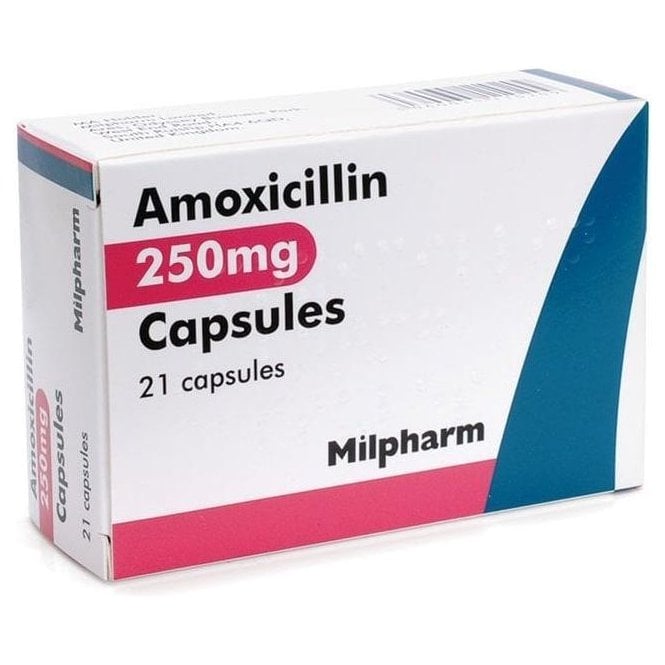Dental infections, often characterized by pain, swelling, and inflammation, can significantly impact an individual’s quality of life. One of the frequently prescribed antibiotics for combating bacterial infections, including those affecting the teeth, is amoxicillin. This essay seeks to delve into the rationale behind the prescription of amoxicillin at a dosage of 500mg four times a day (QID) for the management of tooth infections.
Amoxicillin, classified as a broad-spectrum penicillin antibiotic, is renowned for its efficacy in treating a wide range of bacterial infections. Its mechanism of action lies in inhibiting bacterial cell wall synthesis, disrupting the structural integrity of susceptible bacteria. This disruption ultimately leads to bacterial death, making amoxicillin particularly effective against various strains, including those commonly associated with dental infections.
Tooth infections, often caused by the proliferation of bacteria within the oral cavity, present a unique challenge due to the diverse array of microbes involved. Amoxicillin’s spectrum of activity encompasses both Gram-positive and some Gram-negative bacteria, rendering it an apt choice for dental infections where multiple bacterial species may be implicated. Notably, it exhibits effectiveness against Streptococcus species, which are frequently implicated in oral infections.
The dosing regimen of amoxicillin for tooth infections, typically set at 500mg four times a day, is strategically designed to achieve optimal therapeutic concentrations within the body. This frequent dosing schedule ensures a sustained presence of the antibiotic in the bloodstream, allowing it to combat bacterial populations at various stages of growth. The goal is not only to eliminate existing bacteria causing the infection but also to prevent the development of antibiotic-resistant strains.
Moreover, the pharmacokinetics of amoxicillin plays a pivotal role in determining the appropriate dosing frequency. Factors such as absorption, distribution, metabolism, and excretion influence how the drug interacts with the body. Understanding these pharmacokinetic principles aids healthcare providers in tailoring the prescription to maximize efficacy while minimizing the risk of adverse effects.
In conclusion, amoxicillin’s role in treating tooth infections, underscored by its potent bactericidal effects and broad spectrum of activity, forms the foundation of its prescription at a dosage of 500mg QID. This essay aims to illuminate the pharmacological rationale behind this prescription, setting the stage for subsequent discussions on amoxicillin’s mechanism of action, dosing considerations, and potential adverse effects in the context of managing tooth infections.
Mechanism of Action and Spectrum of Activity
Amoxicillin, a cornerstone in the antibiotic arsenal, owes its efficacy to a well-defined mechanism of action and an expansive spectrum of activity. As a member of the penicillin class, amoxicillin operates by inhibiting the synthesis of bacterial cell walls, a process crucial for the structural integrity of these microorganisms.
The mechanism of action begins with the beta-lactam ring of amoxicillin binding to penicillin-binding proteins (PBPs) on the bacterial cell wall. These PBPs play a pivotal role in cross-linking peptidoglycan strands, an essential step in forming the bacterial cell wall. By binding to PBPs, amoxicillin disrupts this cross-linking process, leading to weakened cell walls and increased permeability. Consequently, the structural integrity of the bacterial cell is compromised, making it more susceptible to osmotic lysis and rendering the bacterium unable to maintain its shape.
One of the notable strengths of amoxicillin is its broad spectrum of activity against various bacterial strains. It is particularly effective against Gram-positive bacteria, including Streptococcus pneumoniae, Streptococcus pyogenes, and Enterococcus species. Furthermore, its spectrum extends to some Gram-negative bacteria, such as Haemophilus influenzae and Escherichia coli.
In the context of tooth infections, this broad spectrum proves advantageous. Dental infections often involve a polymicrobial environment, with a mix of Gram-positive and Gram-negative bacteria contributing to the pathogenic milieu. Amoxicillin’s ability to target both types of bacteria makes it a versatile and comprehensive choice for combating the microbial diversity within the oral cavity.
However, it’s essential to note that amoxicillin’s efficacy is not universal across all bacterial strains. Some bacteria have developed mechanisms, such as beta-lactamase production, to inactivate the drug. To address this, amoxicillin is often co-administered with beta-lactamase inhibitors like clavulanic acid, enhancing its effectiveness against beta-lactamase-producing bacteria.
In summary, amoxicillin’s mechanism of action, centered around disrupting bacterial cell wall synthesis, and its broad spectrum of activity contribute to its prominence in treating tooth infections. The antibiotic’s ability to target a diverse range of bacteria underscores its versatility, making it a valuable tool in the healthcare provider’s arsenal for managing infections within the oral cavity.
Dosing Regimen and Pharmacokinetics
The dosing regimen of amoxicillin for tooth infections, typically prescribed at 500mg four times a day (QID), is carefully calibrated to optimize therapeutic outcomes. Understanding the pharmacokinetics of amoxicillin is paramount in tailoring a dosage regimen that ensures sustained efficacy while minimizing the risk of resistance and adverse effects.
The dosage of 500mg reflects a delicate balance between achieving therapeutic concentrations within the body and minimizing the potential for side effects. The rationale behind a four times a day dosing schedule lies in maintaining a steady concentration of amoxicillin in the bloodstream throughout the day. This frequency is designed to target bacterial populations at various stages of growth, ensuring the antibiotic’s effectiveness against actively replicating bacteria and those in dormant phases.
Upon oral administration, amoxicillin is rapidly and well-absorbed from the gastrointestinal tract. Its absorption is not significantly affected by food, enhancing its convenience for patients who may take it with or without meals. The peak concentration in the bloodstream is usually reached within 1-2 hours after ingestion, emphasizing the importance of timely administration for optimal therapeutic effects.
The distribution of amoxicillin is widespread throughout bodily tissues and fluids, including the dental tissues affected by infection. Its ability to penetrate the various barriers in the body ensures that it reaches the site of infection effectively. However, it’s crucial to recognize that amoxicillin may not achieve therapeutic levels in certain compartments, such as the central nervous system, necessitating alternative antibiotics for infections in these locations.
Metabolism and excretion of amoxicillin primarily occur in the kidneys. The relatively short half-life of the drug, averaging around 1-1.5 hours, necessitates frequent dosing to maintain therapeutic concentrations. This short half-life also underscores the importance of patient adherence to the prescribed dosing schedule to ensure a consistent presence of the antibiotic in the bloodstream.
Considering the pharmacokinetic profile of amoxicillin, healthcare providers can tailor the dosage regimen to individual patient factors, such as renal function and the severity of the infection. Adjustments may be necessary in cases of renal impairment to prevent the accumulation of the drug and potential toxicity.
In conclusion, the dosing regimen of amoxicillin for tooth infections, specifically at 500mg QID, is rooted in a comprehensive understanding of its pharmacokinetics. By leveraging the drug’s absorption, distribution, metabolism, and excretion, healthcare providers can craft a therapeutic plan that maximizes efficacy, minimizes the risk of resistance, and promotes patient adherence, ultimately contributing to successful outcomes in the management of tooth infections.
Considerations for Tooth Infections
The prescription of amoxicillin for tooth infections involves thoughtful considerations to ensure optimal therapeutic outcomes. Dental infections, often polymicrobial in nature, necessitate a nuanced approach to antibiotic therapy, and amoxicillin’s effectiveness against a broad spectrum of bacteria positions it as a front-line choice. However, several factors must be taken into account when initiating this treatment.
Microbial Diversity: Dental infections are commonly caused by a diverse array of bacteria, including both Gram-positive and Gram-negative strains. Amoxicillin’s spectrum of activity, which encompasses many of the bacteria associated with oral infections, is a crucial consideration. Streptococcus species, often implicated in dental caries and periodontal infections, are notably susceptible to amoxicillin. Understanding the microbial profile of the infection is pivotal in selecting an antibiotic that can effectively target the causative agents.
Combination Therapy: In cases of more complex dental infections or those involving beta-lactamase-producing bacteria, combination therapy may be warranted. The addition of a beta-lactamase inhibitor, such as clavulanic acid, to amoxicillin enhances its efficacy by protecting it from enzymatic degradation. This combination broadens the antibiotic’s spectrum and addresses resistance mechanisms employed by some bacteria.
Duration of Treatment: The duration of amoxicillin therapy is typically guided by the severity of the infection. A common prescription involves a 7 to 10-day course, but more severe cases may necessitate an extended treatment duration. It is imperative for patients to complete the full course of antibiotics, even if symptoms improve before the prescribed duration is completed. Premature discontinuation of treatment may contribute to the development of antibiotic-resistant strains.
Patient-Specific Factors: Individual patient factors, including age, renal function, and the presence of allergies, influence the choice and dosing of antibiotics. Adjustments may be necessary in patients with compromised renal function to prevent drug accumulation and potential toxicity. Additionally, awareness of any history of allergic reactions to penicillins is crucial in avoiding adverse events.
Preventing Antibiotic Resistance: Given the global concern of antibiotic resistance, healthcare providers must emphasize the judicious use of amoxicillin. Overprescribing or using antibiotics when not absolutely necessary contributes to the development of resistant strains. Educating both healthcare professionals and patients about the importance of responsible antibiotic use is vital in mitigating this public health challenge.
In summary, the consideration of microbial diversity, the potential need for combination therapy, determination of the appropriate duration of treatment, attention to patient-specific factors, and the broader context of antibiotic resistance are critical elements in prescribing amoxicillin for tooth infections. By addressing these considerations, healthcare providers can tailor antibiotic therapy to the unique characteristics of the dental infection, enhancing the likelihood of successful treatment outcomes while minimizing the risk of complications.
Adverse Effects and Patient Education
While amoxicillin is generally well-tolerated, it is essential for both healthcare providers and patients to be aware of potential adverse effects and to prioritize comprehensive patient education. Understanding the side effects associated with amoxicillin use ensures timely identification and management, contributing to a safer and more effective treatment course.
Common Side Effects: Gastrointestinal disturbances, such as nausea, vomiting, and diarrhea, are among the most frequently reported side effects of amoxicillin. These effects are often mild and transient but can impact patient adherence to the prescribed regimen. Educating patients about the importance of taking amoxicillin with food can help mitigate these symptoms. Additionally, emphasizing the significance of completing the full course of antibiotics is crucial in preventing the development of antibiotic-resistant strains.
Allergic Reactions: Allergic reactions to amoxicillin, while relatively uncommon, can range from mild skin rashes to severe, life-threatening anaphylaxis. Patients with a known allergy to penicillins or beta-lactam antibiotics should be carefully evaluated, and alternative antibiotics may be considered. Healthcare providers must inquire about any history of drug allergies and, if necessary, prescribe alternative antibiotics to prevent serious adverse reactions.
Clostridium difficile Infection: Amoxicillin, like other antibiotics, can disrupt the normal balance of bacteria in the gastrointestinal tract and potentially lead to Clostridium difficile (C. difficile) infection. Symptoms of C. difficile infection include severe diarrhea, abdominal pain, and fever. Patient education should include instructions to promptly report any persistent or severe diarrhea, as this may require further medical evaluation and treatment.
Interaction with Other Medications: Patients should inform their healthcare providers about all medications they are taking to identify potential drug interactions. Amoxicillin may interact with certain medications, such as oral contraceptives, reducing their effectiveness. Ensuring that patients are aware of potential interactions allows for appropriate adjustments to the treatment plan.
Preventing the Development of Antibiotic Resistance: Patient education should extend beyond the immediate concerns of side effects to foster an understanding of the broader issue of antibiotic resistance. Patients should be informed about the importance of taking antibiotics only as prescribed, completing the full course, and not sharing or saving antibiotics for future use. This knowledge empowers patients to be active participants in combating the global challenge of antibiotic resistance.
In conclusion, a comprehensive understanding of the potential adverse effects associated with amoxicillin use is crucial for both healthcare providers and patients. Effective patient education involves clear communication about common side effects, the importance of adherence to the prescribed regimen, the recognition of allergic reactions, the possibility of drug interactions, and the broader implications of antibiotic resistance. This collaborative approach enhances treatment safety, patient compliance, and overall treatment success in managing tooth infections with amoxicillin.
Read also: Supramox Amoxicillin Trihydrate 100 Mg
In summary, this series of essays provides a comprehensive understanding of amoxicillin’s use in managing tooth infections. From its mechanism of action to dosing considerations and potential adverse effects, healthcare providers and patients alike can gain valuable insights into the rationale behind prescribing amoxicillin 500mg QID for tooth infections.







